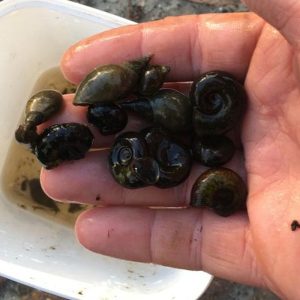Combating thread algae
Home " Knowledge base " Combating carrier algae
Combating thread algae in the pond
One of the most troublesome things in the pond is the formation of filamentous algae. Almost every pond owner suffers from it from time to time. These algae attach themselves to the plants, liner, stones and almost everything else in the water. These algae form long green strands and are not to be confused with floating algae, which turn the water green. Thread algae is kind of a part of a pond, and generally, moderate growth of these algae is a sign that the pond is pretty well balanced. Most likely, the water is clear and the oxygen plants good. In that respect, good news.
How does filamentous algae form in your pond?
Threadlike algae is somewhat similar to weeds in the garden. In the pond, it shares nutrients with aquatic plants. Because filamentous algae are smaller organisms, they can react very quickly, faster than plants, to sunlight. They can therefore grow explosively. The green goo is not a pretty sight, but how do you get rid of it?
When filamentous algae are very abundant in the pond, it may be that the nutrient (nutrient) balance is disturbed. An excess of mainly freely available phosphate, can cause the algae to proliferate enormously. Often then the water is also greenish (green water), but this is not always necessary. Nutrients are released in the pond from the digestion of dead organic material such as invading leaves and dead aquatic plants but also, for example, from fish excrement or the breakdown of excess fish food.
Wire algae removal with Poil snails
An interesting technique for removing filamentous algae is the use of water snails such as Poelslakken, Marsh Snails and Posthorn Snails. These are true Thread algae eaters. These animals have algae on their menu and will leave your plants alone. These "water cows" continuously graze the foil, stones and your plants, eating the algae. Over time, you will additionally find egg sacs; a sign that the snails are reproducing.
Wire algae removal with effective results!
You can see how effective these snails are in tackling biofilm and filamentous algae in the picture below. In a test set-up with an aquarium, we added some fertiliser. After a few weeks, a huge amount of algae grew. In this aquarium, we placed a substantial number of snails. The result after only 1 day is extremely good. In your pond, this will be a bit slower; of course, there are a lot of snails in a small area in the aquarium. Give these toppers some time and your pond will benefit greatly!

Buy pool snails?

Pole snails can be bought from De Vijvermeester's webshop. Here you can find nice packages to help you fight thread algae.
